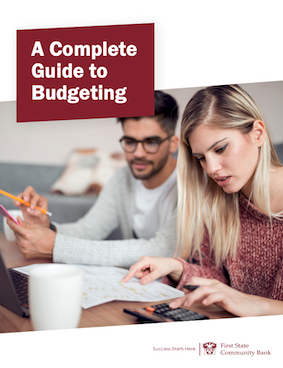Assuming your budget is realistic, you might actually find that spending decisions become less stressful over time because you won’t get stuck worrying over the consequences of each decision. Instead, you can reference your monthly spending versus your available budget and let those numbers determine your spending decisions for you.

First Step: Examining Your Income and Expenses
Budgets are a balance of income and expenses, so this is an important place to start. Figure out how much after-tax income you make in a given month—this is the absolute ceiling for your budget.
Then, add up your spending from the previous month (or look at averages of the last few months) to get a sense of your spending habits. How much are you spending? How does that amount compare to your monthly income?
Break down your spending by category, such as groceries, rent/mortgage, gas/travel, clothing, and so on, and evaluate your spending levels. Are there any spending categories that surprise you? Any categories where you think you could easily trim your spending next month?
If you have a spouse or partner, this is a great opportunity to sit down and have some larger conversations about your spending habits relative to your income. For example, would it help your financial situation to add a second source of income through a side gig or second job, and how would that work?
Approach budgeting with a problem-solving outlook. Don’t be discouraged if you’re struggling to cut costs. Practice patience and explore your options to widen the gap between your spending and your take-home pay.

Second Step: Tailor Your Budget to Your Specific Circumstances
With those spending habits in mind, it’s time to create a budget based on your past expenses and where you believe you can improve in the future.
Enter these conversations with an open mind, and brainstorm possibilities together. For example, are there categories in which you can help each other reduce your monthly spending? It’s hard to trim costs such as rent unless you move into a cheaper place. But maybe you can cut $100 from your restaurants budget in the following month, or maybe you want to try spending a little less on movie tickets, concerts, and other forms of entertainment.
However you approach setting a budget, make sure that all types of spending are accounted for so you end up with a budget that works for you. Try out our budget calculator for an easy, eye-catching tool that visualizes this spending and does the math for you.


 If anxiety about your finances is holding you back, remember that the longterm benefits of setting a budget will put more money in your pocket than playing the avoidance game. And if you’re afraid of what you’ll find when you start digging through your finances, remind yourself to approach budgeting with a non-judgmental attitude.
If anxiety about your finances is holding you back, remember that the longterm benefits of setting a budget will put more money in your pocket than playing the avoidance game. And if you’re afraid of what you’ll find when you start digging through your finances, remind yourself to approach budgeting with a non-judgmental attitude.









